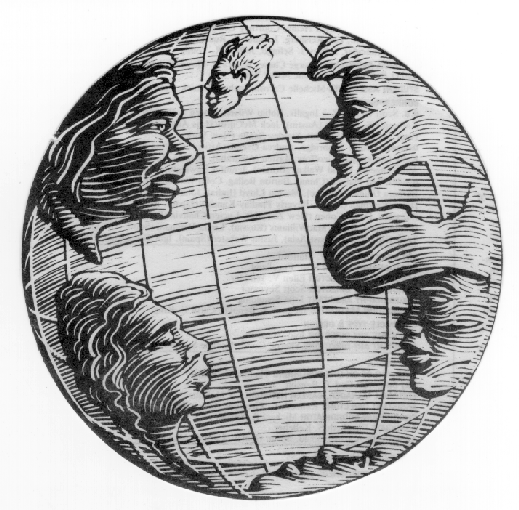

Continental Drift:
Any major new idea in science appears to lead instantly to a search of the past for those who might once have proposed similar concepts and with whom the current proponents should therefore share the credit. In the case of plate tectonics, the primary candidate is obvious: Alfred Wegener of Germany, who explicitly presented the concept of continental drift for the first time at the outset of the 20th century. Though plate tectonics is by no means synonymous with continental drift, it encompasses this idea and derives much of its impact from it.

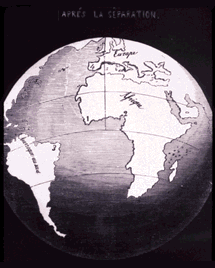
In 1858, geographer Antonio Snider-Pellegrini made these two maps showing his version of how the American and African continents may once have fit together, then later separated. Left: The formerly joined continents before their separation. Right: The continents after the separation.
There might have been predecessors even to Wegener. The outlines of the continents bordering the Atlantic Ocean are so similar that many probably noticed the correspondence, and some might have drawn the conclusion that the lands on both sides were once joined together. The earliest reference to this peculiar geographic feature was made by the English philosopher Francis Bacon. In his Novum Organum (1620), Bacon pointed out the correspondence but did not go beyond that. Such was also the extent of the contribution of the great French naturalist Georges-Louis Leclerc, Count du Buffon, a century later. Neither can Franois Paget qualify as a forerunner of continental drift theorists: even though he stated in 1666 that an undivided continent existed before Noah's flood, he explained the creation of the Atlantic Ocean by having part of that continent sink into the sea.

As noted by Snider-Pellegrini and Wegener, the locations of certain fossil plants and animals on present-day, widely separated continents would form definite patterns (shown by the bands of colors), if the continents are rejoined.
The first credible proponent of continental drift was Antonio Snider-Pellegrini, a belated advocate of catastrophism who, in 1858, ascribed the biblical flood to the former existence of a single continent that was torn apart to restore the balance of a lopsided Earth. More recent and much more sophisticated was the work of the American geologist Frank Taylor, who, disdaining the then-prevailing contraction model of mountain building, postulated in 1908 that the arcuate mountain belts of Asia and Europe resulted from the equatorward creep of the continents. His analysis of tectonic features foreshadowed in many ways modern thought regarding plate collisions, and he anticipated Wegener's publications by only a few years. Curiously, however, his work instantly sank into oblivion.
Plate Tectonics:
Plate tectonics is a theory dealing with the dynamics of the Earth's outer shell, the lithosphere. Resting on a broad synthesis of geologic and geophysical data, it dominates current thinking in the Earth sciences. According to the theory, the lithosphere is broken into seven large and many small moving plates. These plates, each about 50 miles thick, move relative to one another an average of a few inches a year. Three types of movement are recognized at the boundaries between plates: convergent, divergent and transform-fault.
At convergent boundaries, plates move toward each other and collide. Where an oceanic plate collides with a continental plate, the oceanic plate tips down and slides beneath the continental plate forming a deep ocean trench (long, narrow, deep basin.) An example of this type of movement, called subduction, occurs at the boundary between the oceanic Nazca Plate and the continental South American Plate. Where continental plates collide, they form major mountain systems such as the Himalayas.
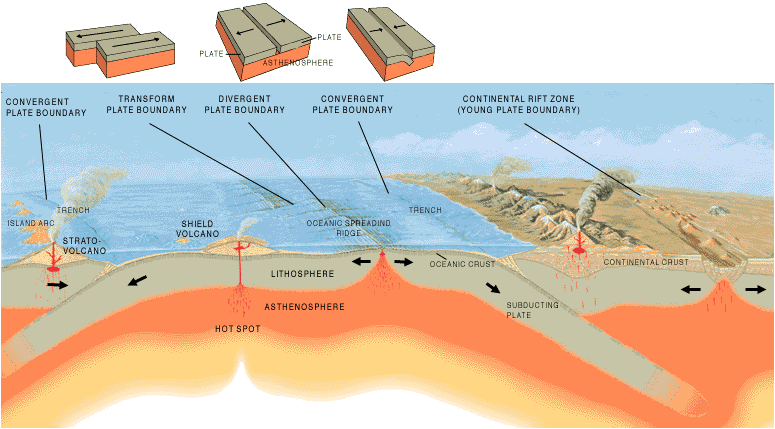
At divergent boundaries, plates move away from each other such as at the Mid-Atlantic Ridge. Where plates diverge, hot, molten rock rises and cools adding new material to the edges of the oceanic plates. This process is known as sea-floor spreading.
At transform-fault boundaries, plates move horizontally past each other. The San Andreas Fault zone is an example of this type of boundary where the Pacific Plate on which Los Angeles sits is moving slowly northwestward relative to the North American Plate on which San Francisco sits.
Plate tectonics, the branch of science that deals with the process by which rigid plates are moved across hot molten material, has helped to explain much in global-scale geology including the formation of mountains, and the distribution of earthquakes and volcanoes.
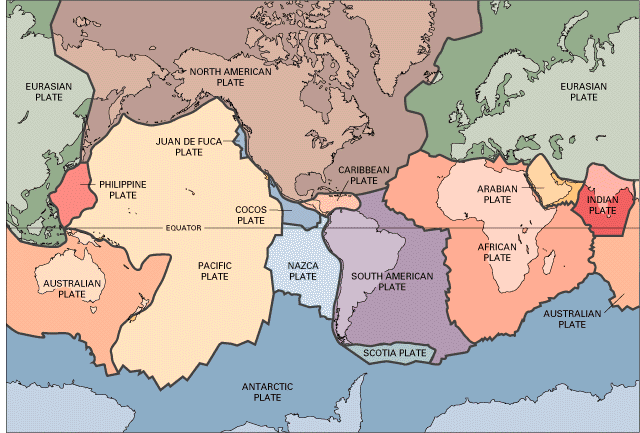
The theory of plate tectonics, formulated during the late 1960s, is now almost universally accepted and has had a major impact on the development of the Earth sciences. Its adoption represents a true scientific revolution, analogous in its consequences to the Rutherford and Bohr atomic models in physics or the discovery of the genetic code in biology. Incorporating the much older idea of continental drift, the theory of plate tectonics has made the study of the Earth more difficult by doing away with the notion of fixed continents, but it has at the same time provided the means of reconstructing the past geography of continents and oceans. While its impact has, to a considerable degree, run its course in marine geology and shows signs of reaching the limits of usefulness in the study of mountain-building processes, its influence on the scientific understanding of the Earth's history, of ancient oceans and climates, and of the evolution of life is only beginning to be felt.
The diagrams below show the break-up of the supercontinent Pangaea (meaning "all lands" in Greek), which figured prominently in the theory of continental drift -- the forerunner to the theory of plate tectonics.
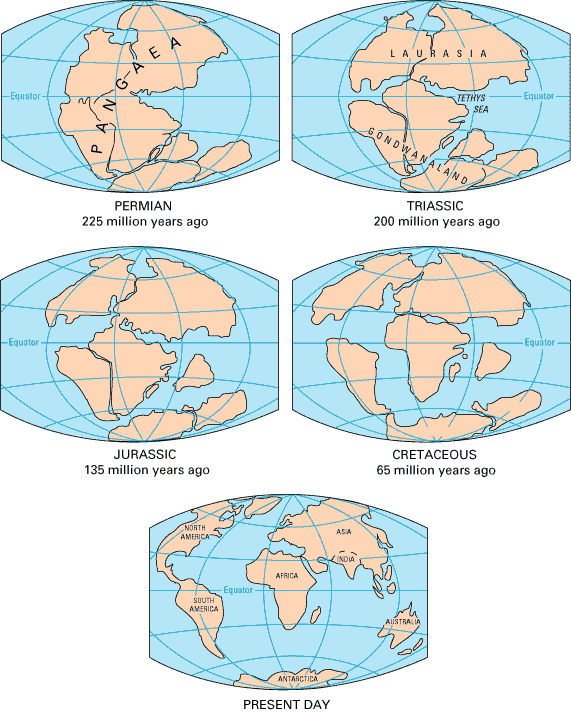
Excerpt from the Encyclopedia Britannica without permission.